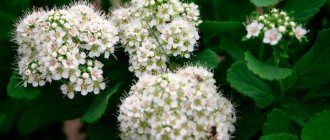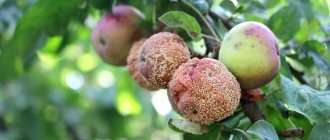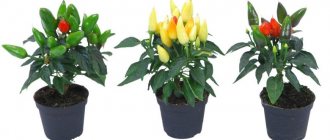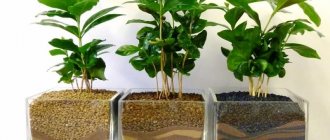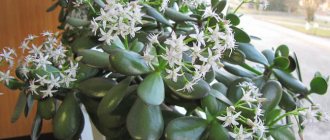One commercial says that all you need to do to be happy is eat a Bounty chocolate bar. Of course, it brings pleasure, but by planting flowering trees in your dacha, you get much more joy. Modern designers are trying to recreate a semblance of the Garden of Eden in their backyard. For this they use different kinds of plants.
In order for the territory to look stylish and attractive all season long, experts advise to approach the matter wisely. What is the secret to creating paradise in your summer cottage? Let's find out what experienced gardeners say.
Almonds low
Low almond, steppe almond, dwarf almond - all these are names of the same plant - a low, slow-growing deciduous shrub that belongs to the Rosaceae family.
It is very decorative, and not only during flowering. In addition, the shrub has medicinal properties, produces a bountiful harvest and is easy to care for. Steppe almonds winter safely without shelter even in Siberia.
The plant blooms in April for several weeks. Numerous soft pink flowers with a diameter of 2-3 cm bloom on the branches simultaneously with green lanceolate leaves. They have oval petals 10-17 mm long.
Delonix
The second name of this tree is fire tree. Its branches blooming in bright red color are difficult not to notice and pass by indifferently.
The historical homeland of the tree is the island of Madagascar. And, although delonix is considered an endangered species, since it can hardly be found in natural conditions, it is very common in many countries, especially in America, where it is grown en masse in squares, parks, and near houses.
The trees grow up to 8-9 m, but have a very wide crown. Perhaps it is thanks to it that the tree owes its popularity - the crown provides excellent shade, which is especially valuable in countries with hot climates. The flowers appear large due to their unusual structure: their petals diverge in different directions.
Delonix is a heat-loving plant; it does not tolerate cold climates; it can survive a lack of moisture, but the foliage will certainly turn yellow.
The plant can be grown in the form of a tub or as a bonsai at home
Forsythia, or forsythia
Sunny forsythia can be found in many cities; this bright shrub adorns city parks and areas near residential buildings. Yellow bell-like flowers appear in April even before the leaves bloom. And if you cut forsythia branches in February and put them in water at home, then after 2 weeks you will get a miniature golden beauty in a vase.
- Forsythia
A sunny shrub that is one of the first to “wakes up”.
- Forsythia: all about planting, care and propagation
In winter, spring and summer - it is always a different color! We talk about how to properly care for forsythia.
Main conclusions
- In nature, there are a large number of beautifully flowering plants, many of which fit perfectly into park and landscape designs under appropriate climatic conditions.
- Most flowering trees are lovers of hot weather and are not adapted to growing in climates with cold winters.
- Pyracantha is a plant that boasts frost resistance and the ability to please the eye even in a snowy garden.
- The plants described above are only the most common, but a small part of the diversity that is the beautiful flowering trees that exist in the world.
Spiraea spring blooming
Spiraea oakleaf
In spring, spireas oakleaf, Arguta, gray, alpine, crenate, three-lobed, Thunberga, etc. bloom. Numerous white flowers appear on last year's shoots in May. Flowering lasts about a month. However, shrubs look most impressive in spring only if they grow in a sunny area. In the shade the flowers become smaller.
- Spiraea is a real decoration of the site
Types of spirea are divided into spring-flowering and summer-flowering. Which ones are better to choose?
Lemon Tree
These houseplants can be grown from seeds or cuttings. Fill a pot about 8cm in diameter with good soil and plant a few seeds so there is enough space around them. Water them generously and cover them with a plastic bag to retain moisture. Place the pot in a warm place. Once the seeds have germinated, remove the bag and place the plants in a bright place, but not in direct sunlight. If you decide to grow citrus fruits from cuttings, root them first. Then place in pots with peat mixed with sand.
The plant should be watered moderately. During fruit ripening, a drier substrate is needed. The optimal temperature for growing is from 20 to 30 degrees. Lemon trees are very sensitive to cold.
Only replant citrus fruits once they have filled the pot with roots. Take a slightly larger pot and do not fertilize immediately after transplanting, wait until the plant takes root in the new conditions. And place it in your office - it will immediately become more comfortable.
Photo: napalete.sk
Photo: napalete.sk
Rhododendron
Rhododendrons belong to the Ericaceae family. These small trees and shrubs are found throughout the world, but are especially popular in China and Japan. Rhododendron flowers are collected in multi-flowered inflorescences of various colors: pink, purple, red, orange, yellow, white. They bloom in May, and at this time it is impossible to take your eyes off the rhododendron.
In the middle zone, the most winter-hardy and unpretentious rhododendrons are grown: Katevbinsky, Daurian, Vazeya, golden, Caucasian, pointed, Japanese. Only their heat-loving varieties need shelter, and species plants tolerate even harsh winters well.
- Winter-hardy rhododendrons - 10 most beautiful varieties with photos and descriptions
Frost-resistant rhododendrons for open ground.
- Rhododendron katevbinsky
One of the most beautiful flowering shrubs that overwinters with green leaves.
Flowering trees are a magnificent highlight of the garden
It can be difficult to create a green area in your backyard. Therefore, designers advise choosing plants that will harmoniously combine with each other.
In addition, a number of nuances should be taken into account:
- tree sizes;
- flowering period;
- color of bud petals.
It turns out that nowadays it is quite easy to choose beautifully flowering trees that bloom in early spring or summer. In addition, buds of various tones and sizes appear on the branches. However, it should be remembered that the main element of the garden landscape are perennial and annual flowers. Therefore, ornamental trees must fill the “pauses” that occur between their bud periods throughout the season. When arranging a garden, you need to remember the main goal. Some people like fruit crops, others prefer lush aesthetics and aroma. A detailed acquaintance with the crops available in your area will help you make your choice.
Careful study of the external features and conditions of plant maintenance is the basis for creating a wonderful garden.
Almond trees bloom in early spring
The Mediterranean is considered the birthplace of culture. Currently, it is grown on the American continent, in Europe, China and the Caucasus. The plant belongs to the genus “Plum” and the family “Pink”. An adult crop grows up to 6 m in height, and the rhizome penetrates quite deeply into the soil. Thanks to this, it easily tolerates drought.
The almond crown is formed by generative (short) and vegetative (long) branches. Petioled leaf plates with pointed edges bloom on them. In early spring (March-April), the buds, consisting of five graceful petals, begin to bloom. Their diameter reaches approximately 2.5 cm. A bright tree with pink flowers looks great against the backdrop of a “sleeping” garden. It gives it a certain solemnity and “reminds” the arrival of spring.
Since almonds love a temperate climate, in mid-latitudes they are reliably covered for the winter. And in St. Petersburg, Vologda and the steppe zone of Siberia, it is desirable to grow frost-resistant varieties.
Blooming magnolia trees
The tree is considered the most picturesque specimen on earth. After all, it is covered with delicate buds almost all summer. Most magnolias grow in southern countries where there are no severe frosts. Fortunately, some species of this tropical flowering tree do well in fairly cold regions. In its natural environment, the plant is found in North and South America, on the islands of Java and Sumatra. It is also successfully cultivated in Europe. For example, in the Kiev Botanical Garden, biologists grew over 40 species of magnolias.
The plant is an evergreen crop. The trunk and branches, covered with gray bark, form a pyramidal crown. The foliage is oval shaped and rich green. Immediately after falling, new specimens appear on the branches, so magnolia is always in trend.
Particularly impressive is the period when a tree with flowers attracts hundreds of insects. Depending on the variety, the buds are painted in the following colors:
- snow-white;
- light pink;
- purple;
- cream.
The petals are collected in a wide figured bowl, from which a delicate aroma emanates. After pollination, cone-shaped leaflets are formed on the branches, giving the tree a special decorative appearance.
Frost-resistant varieties of magnolia include: “Siebolda”, “Zvezdchataya”.
Sakura
Among popular flowering trees, Japanese cherry occupies a special place. In mid-spring, it attracts the attention of millions of people. They watch with delight the lush pink clouds that hover in the cozy alleys of Paris, New York, Hamburg and Tokyo.
Biologists count more than 400 varieties of this unique tree. The most popular are:
- "Kanzan"
- "Kiku-Shidare";
- "Tai Haku";
- "Royal Beauty".
Each of them has its own characteristics. Some grow up to 5-7 m, others barely reach 2 m. However, all trees have a thick, lush crown, abundantly strewn with many pink buds. Inflorescences come in both simple and double shapes. Inedible fruits are formed in place of numerous bouquets. Despite their Japanese origin, frost-resistant varieties of sakura successfully take root in the middle zone.
When planting Japanese cherry trees, it is advisable to choose open, well-lit areas without drafts.
Delonix royal
For its bright outfit, this unique tree with red flowers is called the flaming tree, flame and fire tree. Its homeland is the island of Madagascar, where the crop is found in dry forest plantings. Despite this exotic origin, Delonix regalis is grown in various parts of the world.
The tree has a spreading, wide crown that saves its fans from the heat. Adult specimens reach 9 m in height. During flowering, the culture puts on a bright outfit of many buds. They consist of 4 petals directed in different directions. The length of each of them is approximately 8 cm. In the middle latitudes, Delonix royal is used as a tub crop or bonsai.
Delonix royal miraculously tolerates drought, but at low temperatures it immediately loses its foliage.
Flowering cassia trees
The culture is considered a close relative of the Chinese brown tree. It belongs to the famous Laurel family. In nature, cassia grows up to 15 m in height. On its numerous branches grow oval-shaped leaves with a glossy surface.
During flowering, the cassia crown is completely covered with many buds, collected in elegant bouquets. Due to its bright color, the plant is often called a tree with yellow flowers or golden shower. They bloom at the end of spring. The diameter of one bud reaches 20 cm. The length of the inflorescences is approximately 40 cm.
Jacaranda (violet tree)
There are about 50 varieties of culture in nature. South America is considered its homeland. There, jacaranda grows in dense thickets of tropical forests. This detail indicates that the plant loves an abundance of heat and moisture.
The violet tree with lilac flowers has an erect trunk with gray bark. Its maximum height reaches 15 m. Numerous branches form a spreading openwork crown. Young shoots are covered with thin red bark, which gives the crop a special decorative appearance.
The foliage, up to 30 cm long, has a complex shape and consists of many small plates. At the appointed time (summer and autumn), elegant fragrant lilac or purple buds form on the branches. They consist of five petals and decorate the tree for 8 weeks, emitting an intoxicating aroma.
The violet tree is suitable for regions where winter temperatures drop to 0°C.
Galesia
The luxurious lily of the valley tree belongs to the Styrax family. Its homeland is North America, where the crop grows up to 30 m. In the gardens of our compatriots, a tree with white flowers, a photo of which reveals its pristine beauty, grows only up to 3 m in height. It has a neat pyramidal crown. The branches are decorated with long foliage of dazzling green color. At first it has a light green tint, and then acquires darker tones.
The large buds of the lily of the valley tree really resemble the flower of the same name. They are distinguished by their bell-shaped shape and drooping structure. The inflorescences begin to shine even before they are completely freed from gray scales. From the outside, galesia resembles a bride in a snow-white dress. Flowering begins in late spring and lasts about 2 weeks. The spectacle takes place against the backdrop of the lush greenery of the garden, so it remains in the memory until the next season.
The lily of the valley tree opens its buds for the first time when it is 6 years old.
Albizia
A unique silk tree originally from China will become the pearl of your summer cottage. It feels comfortable in latitudes with a temperate climate. Albizia looks especially impressive during the flowering period. For this reason, it is called an exotic Chinese tree with pink flowers or spring mimosa.
Under natural conditions, the culture grows up to 10-15 m. It has:
- several main trunks;
- low spreading branches;
- fern foliage.
Lush pink buds are evenly distributed throughout the entire crown of the albizia. They appear in mid-spring. The last inflorescences mark the beginning of autumn. The life cycle of a silk tree lasts approximately 20 years.
Popular varieties of albizia:
- "Alba" (snow-white buds);
- "Bubri" (bright pink inflorescence petals);
- "Summer Chocolate" (distinguished by burgundy foliage).
The plant is actively used in the formation of stylish landscapes. It is found in city parks and country gardens. Silk wood makes stylish alleys.
It is advisable to grow the crop in areas where relatively mild winters are observed.
We got acquainted with the original flowering trees, which are often so lacking in a summer cottage. They come in different sizes. The petals of the buds are colored white, red, yellow and pink. Crops will add uniqueness to the landscape if you choose an option suitable for your climate. Let our gardens turn into a cozy oasis of pleasure where you can taste a Bounty chocolate bar.
Barberry Thunberg
This deciduous shrub with branching shoots is primarily famous for its bright red berries, which decorate the plant from mid-summer to late winter. But the reddish-yellow flowers are no less spectacular. They bloom at the end of May and bloom for 10-12 days.
Barberry Thunberg also has decorative small leaves. In species plants they are bright green (scarlet in autumn), and in varietal specimens they can be yellow (Aurea), brown (Bagatelle), purple with edging (Golden Ring), variegated (Rose Glow), etc.
- Barberry Thunberg
A charming shrub with bright red berries and variegated foliage.
Albizia
This is a colorful representative of the Mimozovs. Widely distributed in Africa and Australia. The tree grows no more than 8 m in height, the leaves are feathery, light green in color, and fall off in the fall.
The plant blooms with fluffy pink capitate inflorescences from mid-summer to mid-autumn. The tree is a long-liver: under good growing conditions, its age can be about 100 years.
The disadvantages of wood include its increased sensitivity: it does not withstand the tests of frost and drafts.
Albizia is common in the Crimea, the Mediterranean and the Black Sea coast.
Magnolia
Deciduous forms of magnolia bloom in April-May, and the flowers bloom before the leaves appear. The most popular spring-flowering magnolias are holly, naked, star, Kobus, Soulange, Loebner. It is noteworthy that in mid-summer these shrubs can bloom again.
Magnolia flowers are pink or white and very fragrant. Depending on the type, they can be small or large (up to 20 cm in diameter).
- Magnolia hybrida George Henry Kern
Spring-blooming shrub with delicate fragrant flowers
- Magnolia Kobus
A cold-resistant magnolia whose spring blooms are simply mesmerizing.
- Magnolia star
The shortest plant of the Magnolia genus, on which numerous stars “light up” in early spring.
- 7 popular types of magnolia for your garden
Magnolias that will not leave you indifferent.
Cassia
This tree belongs to the Laurel family, and another name for the tree is fragrant cinnamon. The plant grows up to 15 m in height, the leaves are oval-shaped, not very large, glossy. The flowers are light yellow, very abundant. Because of their number, sometimes the crown is not even visible. Flowering begins in late spring.
In countries where the plant is widespread, its bark is used to produce spices (Sri Lanka, Indonesia, Cambodia).
Tree peony
Large spherical buds (15-25 cm in diameter) appear on the bush in the second half of May and do not fade for about two weeks. Double or semi-double flowers can be white, soft lilac, pink, crimson or lilac with a dark crimson spot at the base.
In ornamental gardening, the most common hybrids are subshrub peony. They have long feathery leaves and white, pink, lilac or red flowers with a diameter of 25 cm.
- Everything you need to know about peonies in one article
We have collected all the most useful tips on planting, growing and propagating peonies. Enjoy reading!
- 9 fantastically beautiful varieties of tree peony
Magnificent peonies that will take your breath away!
- Tree peonies - planting and care
Don't know how to plant and grow a tree peony? We'll tell you!
Cercis canadensis
This genus of plants consists of 7 species. The tree grows up to 12 m, its branches during flowering are strewn with small pink flowers that grow in bunches. The leaves are large, heart-shaped. By the end of summer, the beans ripen on the trees and may not fall off for about two years. The plant has a very slow growth rate.
The plant is too heat-loving, only its Canadian species is adapted to life on the streets in more severe climatic conditions.
Decorative apple tree
This tree is grown not for its harvest, but to decorate the garden. White, pink or purple flowers appear on the plant in May, and in autumn and winter the tree is covered with small red apples. The leaves are no less attractive: in many specimens they are burgundy or purple.
In landscape design, decorative apple trees of the Royalty, Helena, Everest, Royal Beauty, Rudolf varieties, as well as the Niedzvetsky apple tree are most often used.
- Decorative Niedzwiecki apple tree
A tree that, when in bloom, fills the garden with an intoxicating aroma.
Mimosa
For many, this delicate flower is associated with spring. Its homeland is Australia. The flowering of the plant actually begins in March and lasts for several months. The flowers are small fluffy yellow balls with a delicate aroma, collected in inflorescences. The leaves are not too large, also fluffy. Mimosa can grow up to 10-20 m. The plant is an evergreen.
Rose hip
This bush is also known to both old and young. Wild roses bloom on the bush at the end of May and emit a pleasant aroma. The plant is unpretentious and does not require watering, but for lush flowering it needs a sufficient amount of light.
- Rose hip
A popular plant with fragrant flowers and medicinal fruits.
This article features mainly plants that bloom in May. But this does not mean that in April most trees and shrubs are still “sleeping”. We just decided not to repeat ourselves, since we have already written about “early birds” before. If you missed these materials, take a look at the articles:
- 10 ornamental shrubs and trees that bloom in early spring.
- Top 16 primroses among shrubs and trees.
Pyracantha
Of all the variety of beautifully flowering plants described above, this shrub is perhaps the only one capable of tolerating cold climatic conditions. It is an evergreen and looks very impressive in a snowy winter garden with its scarlet berries, which retain their bright color all winter. It is worth remembering that the berries of the plant are inedible.
Under natural conditions, pyracantha grows up to 6 m in height and can reach the same size in width. The plant blooms with whitish-cream flowers, emitting a delicate aroma, the leaves are oblong, dark green. Pyracantha also feels great at home in tubs.
snake tree
This tree is rarely seen in the home, but it is so unusual that we encourage you to consider growing it. For the first five to six years, the trunk of this plant resembles a writhing snake - it’s clear why it received such a name. Then comes the flowering period of the snake tree. Its buds are very beautiful, but they spoil the impression of themselves with a terrible smell, similar to the stench of rotting meat. If this doesn’t scare you, buy such a plant and admire its magical appearance.
Photo: hroomy.com
Indoor maple
Abutilon, or indoor maple, is an unpretentious indoor plant that is used to decorate residential premises, offices, winter gardens and greenhouses.
In indoor conditions, with proper care, a formed shrub can live for quite a long time. Over time, an adult plant loses its decorative appearance and blooms less often. To prevent this from happening, you should prune more often and remove dried leaves and buds.
Indoor maple requires diffuse lighting - direct sunlight can cause leaf burn. In winter, the flower needs additional lighting, for which you can use phytolamps or fluorescent lamps. If there is not enough light, the indoor maple tree stops blooming. In summer, it can be kept on a balcony or veranda, protected from drafts and cold winds.
Foo:

